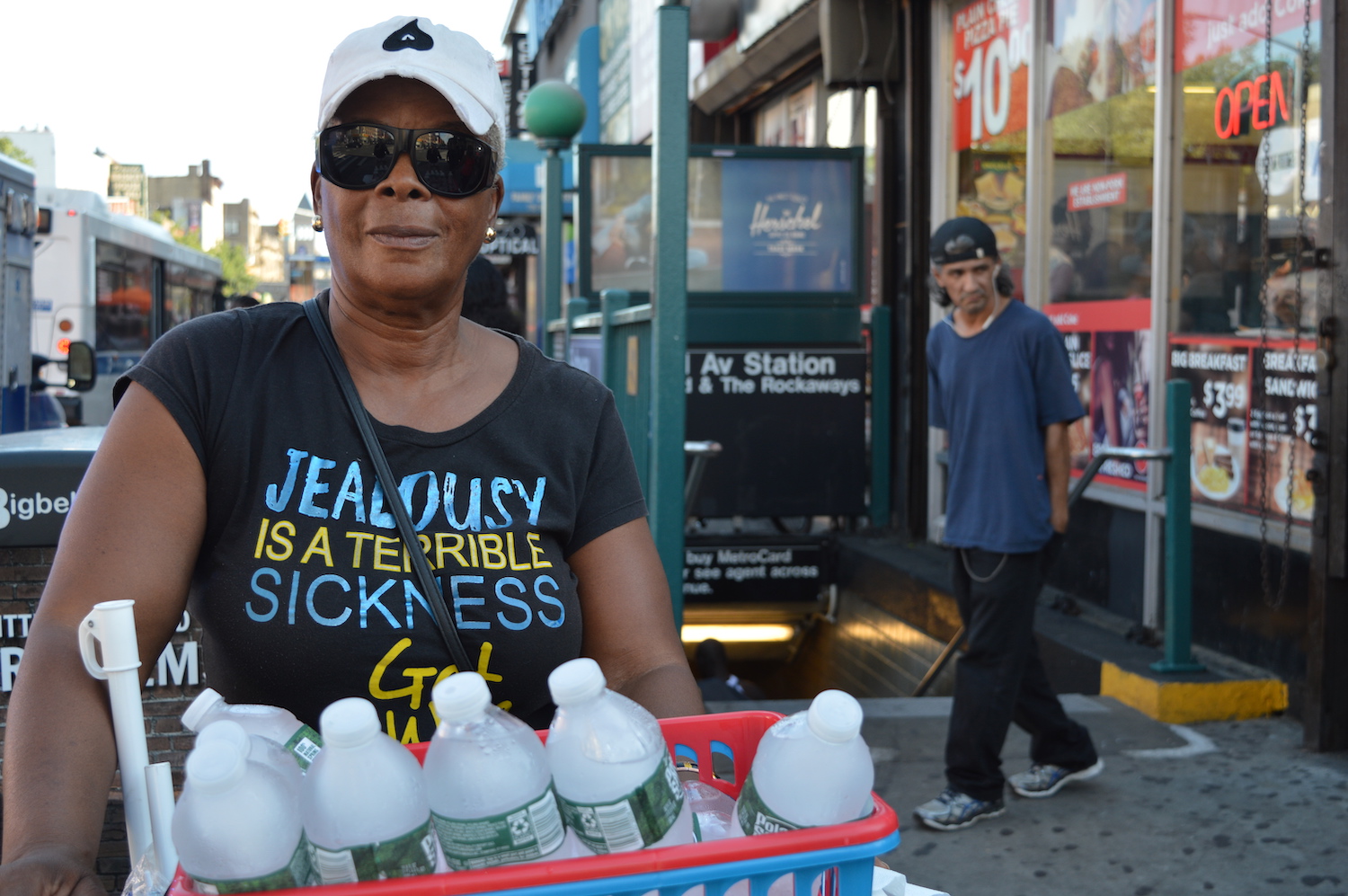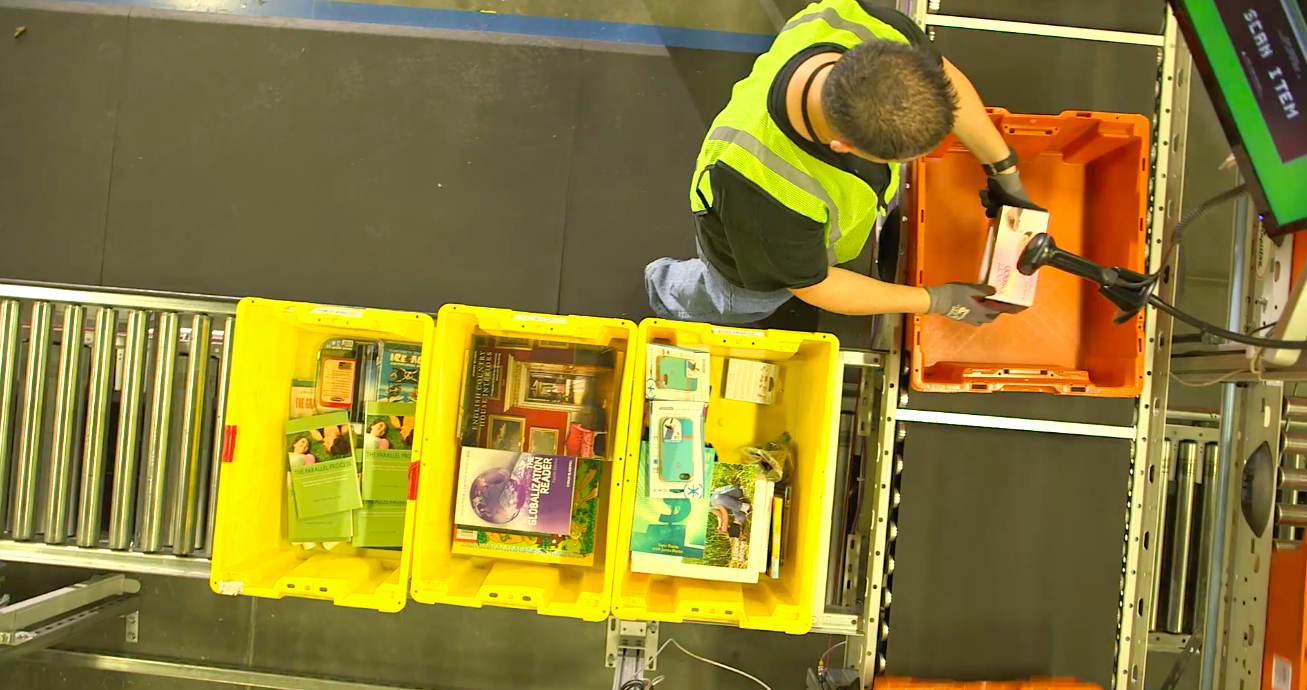
Street Vendor Project
Ingrid sets up shop on a busy corner in Brooklyn’s Bedford-Stuyvesant neighborhood for a few months each summer to sell bottled water. The 71-year-old street vendor is one of a handful of her peers who compete for the foot traffic streaming out of the subway station day and night.
She sells a case or a case and a half each day, and when it’s gone, it’s gone. It’s not a whole lot of money, but it supplements her social security income. Business is best in August.
 Street Vendor Project
Street Vendor Project Ingrid, 71, sells bottled water in Bedford-Stuyvesant, Brooklyn. As the weather becomes cooler, Ingrid says she’s probably done for the season.
“It’s hard out here for a woman,” she says, describing an instance in which a male competitor told her she needed to find somewhere else to go, and later sent his friends to say the same. “I said, it’s a free country. Everyone has to eat,” she adds.
A new survey of 50 women vendors released Monday by the Street Vendor Project, an initiative of the non-profit Urban Justice Center, found that more than half of the respondents were their family’s primary breadwinner, and on average they supported 3.8 people financially including themselves. Most live in outer boroughs, and about half travel between boroughs for work. More than 70 percent or respondents were from Ecuador and Mexico.
There are no official statistics on the number of street vendors selling food, goods, and art outdoors in New York City, but researchers estimate it’s about 20,000 people. Women make up less than a quarter of the city’s street vendors who have received official permits in recent years, but they may make up a large proportion of the total vendor population: One recent count in Queens found that 79 percent of vendors were women.
Ingrid—who’s only using her first name for fear of repercussions—doesn’t have a permit, and the police have twice sent her packing. Next time, they’ve told her, they’ll confiscate her water bottle. Now that it’s getting cooler, Ingrid says she’s probably done for the season. She hopes to get a license next year.
The work can be precarious. Three quarters of survey respondents do not hold permits or licenses, meaning they can be fined or their property can be confiscated by the police. Almost half reported they feared for their safety at work. Twelve reported explicit fear of the police and health inspectors.
Legislation under consideration in City Council might alleviate some of those stressors. Right now, food vending permits are not easy to come by. Wait lists can be decades long. Most of the survey respondents who did have permits were renting them through the underground market. Because they’re so scarce, renting permits can cost more than $25,000 for a two-year timeframe, even though the city issues them for $200.
The bill, titled Intro No. 1116-2018, would lift the cap on the number of food vending permits available in the city by 400 per year for 10 years. The first permits would go to the people on the waiting list, and the rest would be issued through a lottery system. The bill would also establish a Vendor Advisory Board that includes input from vendors.
Ingrid says she’d like to have a license so the police can’t send her home. She wants to start selling mangos in addition to water and soft drinks. Last year, she sold them during Labor Day, but she doesn’t want to add them to her regular line-up without city approval.
The survey results showed that vendors would value support from the Street Vendor Project in the form of market opportunities. About half said they’d appreciate social and financial services, and about 40 percent said they’d be interested in trainings such as English-language classes.
Ingrid, who already speaks English, says she doesn’t need any more training. “It’s easy,” she says. “You just figure out what the customers want.”










